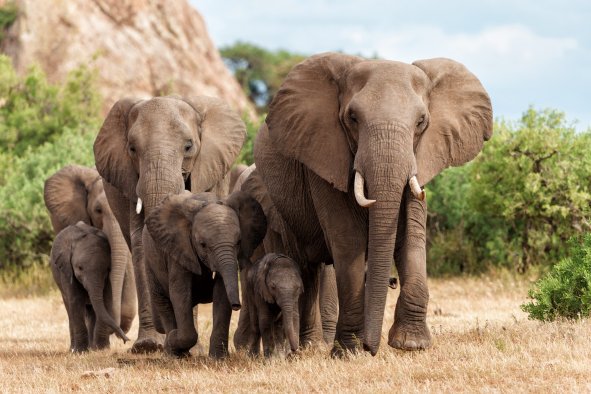Paleontologists have discovered a new dinosaur species that lived in what is now Utah around 99 million years ago and appears to have been adapted to underground living.
The previously unknown species, Fona herzogae, was a small-bodied, plant-eating dinosaur that would have been roughly similar in size to a large dog. It is likely that the new species was covered in a downy coat of colorful feathers.
A study in the journal The Anatomical Record, in which the species is described, said that the dinosaur had a number of distinguishing characteristics. These include large bicep muscles, strong muscle attachment points on the hips and legs, fused bones along the pelvis, and hind limbs that were proportionally larger than the forelimbs.
Such features are often seen in other animals that are known to dig and burrow, which indicates that the species spent at least part of its time underground.
F. herzogae was described based on specimens found by researchers from North Carolina State University and the North Carolina Museum of Natural Sciences (NCMNS) in a part of Utah's Cedar Mountain geological formation known as the Mussentuchit Member.
Around 99 million years ago, this area formed part of a large floodplain ecosystem nestled between the shores of a vast inland ocean to the east and mountains—including active volcanoes—to the west. This landscape was wet and muddy, with several rivers running through it, and the environment at the time was warm.
The paleontological contexts in which many of the F. herzogae specimens were found also provide further support for the idea that this was a borrowing dinosaur.
"The bias in the fossil record is toward bigger animals, primarily because in floodplain environments like the Mussentuchit, small bones on the surface will often scatter, rot away, or become scavenged before burial and fossilization," said study first author Haviv Avrahami, in press release.
"But Fona is often found complete, with many of its bones preserved in the original death pose, chest down with splayed forelimbs, and in exceptionally good condition. If it had already been underground in a burrow before death, it would have made this type of preservation more likely," said Avrahami, who is affiliated with North Carolina State and the NCMNS.
Remains of the species are far more common in this area than would normally be expected for a small animal with fragile bones—another indication that the dinosaur spent time underground.
"The best explanation for why we find so many of them, and recover them in small bundles of multiple individuals, is that they were living at least part of the time underground. Essentially, Fona did the hard work for us, by burying itself all over this area," said study author Lindsay Zanno in the release. She is an associate research professor at NC State and head of paleontology at the NCMNS.
To date, researchers have yet to identify any underground burrows made by F. herzogae. But previous research has documented those of its closest relative, Oryctodromeus, in Idaho and Montana—further evidence of the new species' burrowing nature.
The latest study broadens our understanding of ecosystems in the Cretaceous period (roughly 145 to 66 million years ago), according to the researchers.
"People tend to have a myopic view of dinosaurs that hasn't kept up with the science," Zanno said. "We now know that dinosaur diversity ran the gamut from tiny arboreal gliders and nocturnal hunters, to sloth-like grazers, and yes, even subterranean shelterers."
Do you have an animal or nature story to share with Newsweek? Do you have a question about paleontology? Let us know via science@newsweek.com.
Disclaimer: The copyright of this article belongs to the original author. Reposting this article is solely for the purpose of information dissemination and does not constitute any investment advice. If there is any infringement, please contact us immediately. We will make corrections or deletions as necessary. Thank you.



